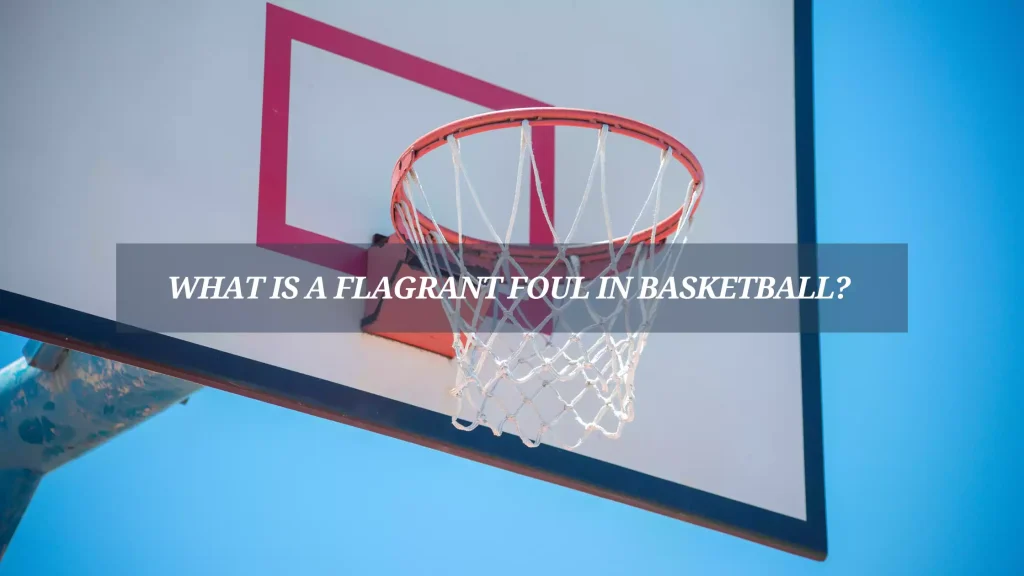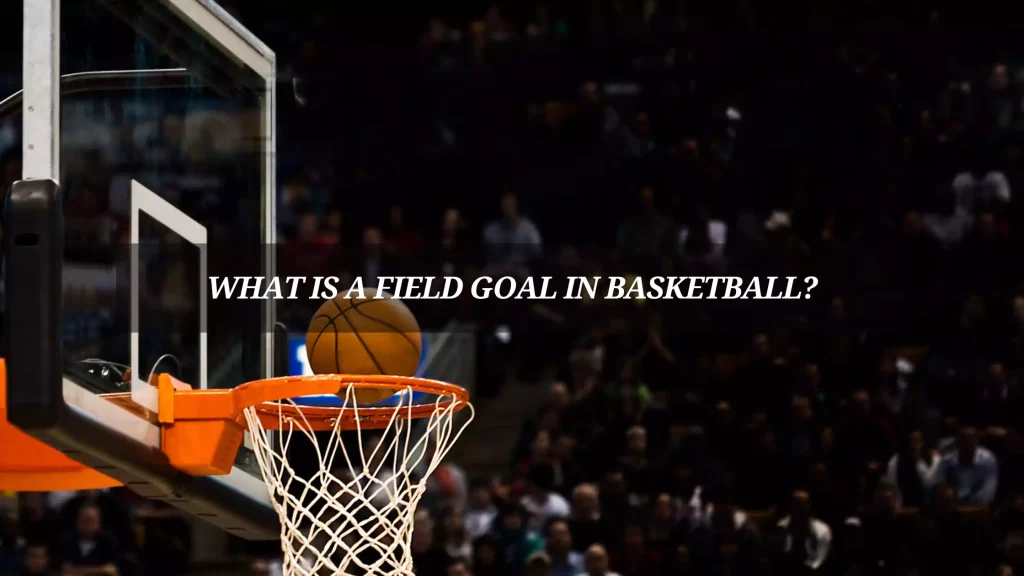In the fast-paced, high-intensity world of basketball, physical contact is inevitable. But when a player crosses the line from aggressive play to dangerous behavior, officials have to step in. That’s where the term flagrant foul comes into play. So, what is a flagrant foul in basketball and why does it matter? Whether you’re a casual fan, a die-hard follower of the NBA, or a young athlete learning the game, understanding flagrant fouls helps you appreciate the sport’s balance between intensity and safety.
Understanding the Basics: What Is a Flagrant Foul?
A flagrant foul in basketball is a serious personal foul that involves excessive or violent contact which could potentially injure another player. Unlike common fouls, flagrant fouls go beyond just impeding play they cross into dangerous territory.
The NBA classifies flagrant fouls into two types: Flagrant 1 and Flagrant 2. The distinction is important because it affects both the game and player discipline.
- Flagrant 1: Unnecessary contact committed by a player against an opponent.
- Flagrant 2: Unnecessary and excessive contact, often with malicious intent or a high risk of injury. A Flagrant 2 results in immediate ejection from the game.
Officials have the authority to review any potentially flagrant foul using video replay. This ensures that the call is as accurate as possible especially in high-stakes situations where a single foul can change the outcome of the game.
Why Flagrant Fouls Exist in the Game
Basketball is a contact sport, but it’s not supposed to be dangerous. The concept of flagrant fouls was introduced to protect players from harm and to maintain the integrity of the game. In leagues like the NBA, where athletes are running full speed, jumping high, and making split-second decisions, one reckless move can lead to serious injury.
Flagrant fouls also deter players from intentionally harming others or playing overly aggressive defense. It keeps the game competitive but fair, encouraging skill over brute force.
Flagrant 1 vs. Flagrant 2: What’s the Difference?
Let’s break down the distinction a bit further, because this is where many fans get confused.
Flagrant 1: Unnecessary Contact
A Flagrant 1 is usually a hard foul that doesn’t necessarily show malicious intent but goes beyond a normal basketball play. Think of a player swiping down aggressively and hitting the arm or body, or shoving an opponent mid-air without a play on the ball.
Example: In a 2023 regular-season game, Draymond Green was assessed a Flagrant 1 after grabbing an opposing player by the jersey to prevent an easy layup. It was clearly unnecessary, but not excessive enough to warrant an ejection.
Flagrant 2: Unnecessary and Excessive Contact
Flagrant 2 is the more serious of the two. This foul typically involves a wind-up, follow-through, and contact above the shoulders—or any act deemed “unsportsmanlike” by the referees.
Example: One of the most infamous Flagrant 2 fouls occurred during the 2016 NBA Playoffs when Golden State’s Draymond Green kicked Oklahoma City’s Steven Adams. While some debated intent, the league took swift action and issued fines and suspensions.
Flagrant 2 fouls result in immediate ejection, a fine, and sometimes suspension especially if the player has a history of similar conduct.
The Impact of Flagrant Fouls on the Game
Flagrant fouls aren’t just about stopping bad behavior they significantly affect the game’s outcome. Here’s how:
- Free Throws: The offended team receives two free throws and retains possession of the ball, giving them a potential four- or five-point swing.
- Momentum Shift: An ejection or penalty can change the tempo of the game, often energizing one team while demoralizing the other.
- Reputation and Suspensions: Players who accumulate multiple flagrant foul points during the season or playoffs face automatic suspensions.
In fact, during the 2022 NBA Playoffs, Dillon Brooks received a Flagrant 2 for a hard foul on Gary Payton II that fractured his elbow. The incident not only ejected Brooks from the game but shifted public conversation about player safety and officiating consistency.
How Flagrant Fouls Are Reviewed
Unlike most other fouls, officials have the option and often the requirement to review flagrant fouls via replay. Here’s how it works:
- Immediate Review: Once a flagrant is suspected, referees head to the scorer’s table to watch replays from multiple angles.
- Criteria Considered: Officials evaluate the severity, wind-up, follow-through, point of contact, and whether the action was a legitimate basketball play.
- Final Decision: The referees determine whether it’s a Flagrant 1, Flagrant 2, or just a common foul. Once decided, the penalty is enforced.
This review process ensures transparency and helps avoid overreactions or missed calls in real time.
Flagrant Fouls Across Different Levels of Play
While the NBA has its specific rules, other levels of basketball including NCAA and international play (FIBA) also penalize flagrant behavior, though the terminology might differ.
- NCAA: Uses the terms Flagrant 1 and Flagrant 2, similar to the NBA. These often come into play during heated college rivalries.
- FIBA: Calls them unsportsmanlike and disqualifying fouls. These are treated very seriously in international tournaments where national pride is at stake.
Regardless of the level, the spirit remains the same: protect players and promote fair play.
How Players and Teams Adjust
Flagrant fouls can affect how players approach defense. Coaches often drill athletes on how to contest shots without putting themselves at risk of drawing a flagrant. You’ll see defenders raise their hands straight up or avoid swiping down aggressively when players are airborne.
Teams also scout opponents known for drawing contact. Smart players like Jimmy Butler or Chris Paul know how to exaggerate contact just enough to draw attention, putting pressure on defenders to be extra cautious.
On the flip side, repeat offenders develop reputations that can haunt them. The NBA tracks flagrant foul points if a player accumulates too many during the postseason (like Green did in 2016), they face automatic suspensions that can change a championship series.
Why Flagrant Fouls Matter to Fans
You might wonder: why should fans care so much about flagrant fouls?
The answer is simple. These fouls impact the outcome of games, shape player narratives, and influence team strategies. They’re also a lightning rod for debate just watch any playoff series, and you’ll see social media explode with reactions to controversial flagrant calls.
Flagrant fouls have also become a key storyline in rivalry games. They add tension, drama, and context to the stakes. When a star player gets ejected or misses time due to suspension, fans feel the impact directly.
Final Thoughts: The Balance Between Physicality and Safety
Basketball will always be a physical sport. Contact is part of what makes it thrilling. But there’s a line between hard-nosed defense and reckless endangerment and that’s where flagrant fouls come in.
Understanding what a flagrant foul is helps fans, players, and coaches better appreciate the nuances of the game. These rules aren’t just about penalties they’re about keeping athletes safe and preserving the spirit of competition.
So next time you’re watching a game and see the refs head to the monitor, you’ll know exactly what’s at stake.


